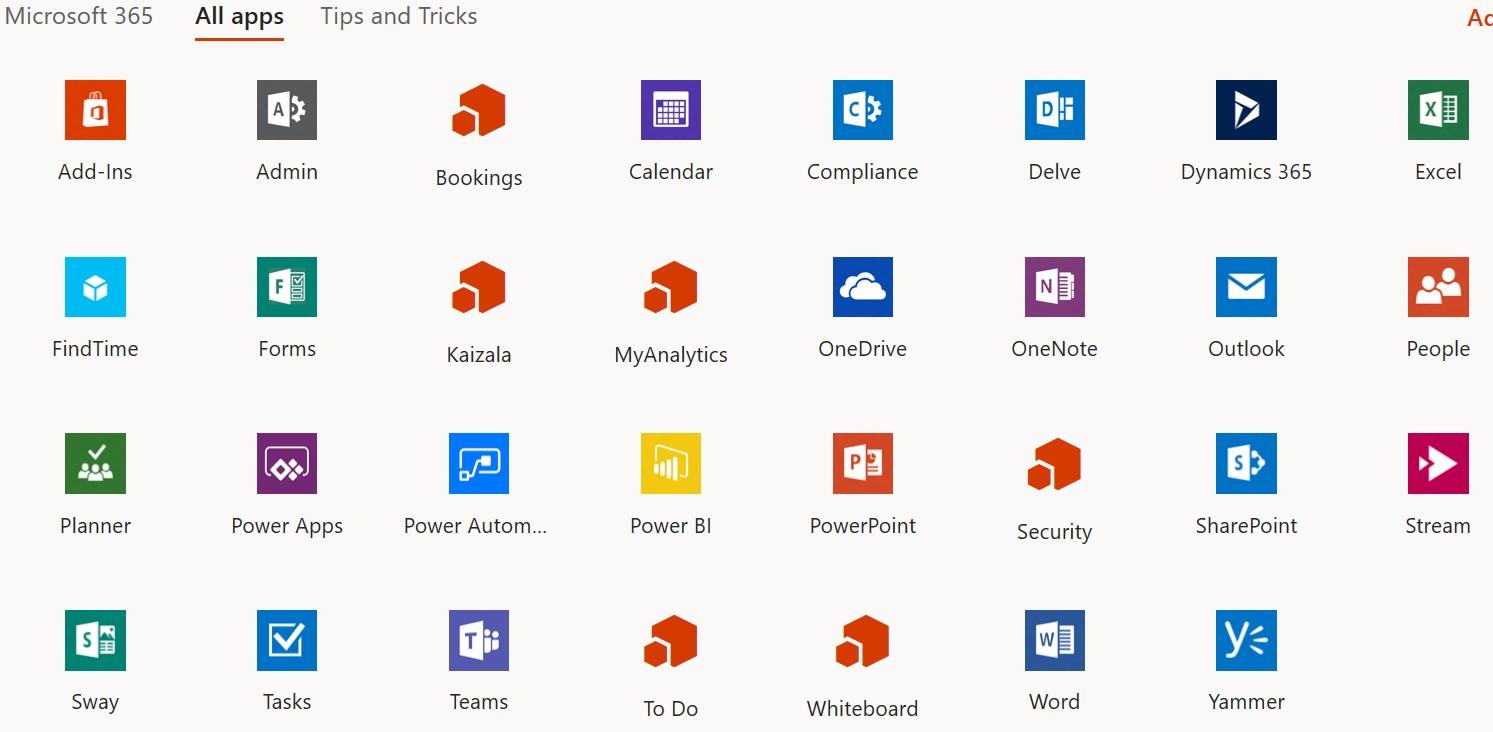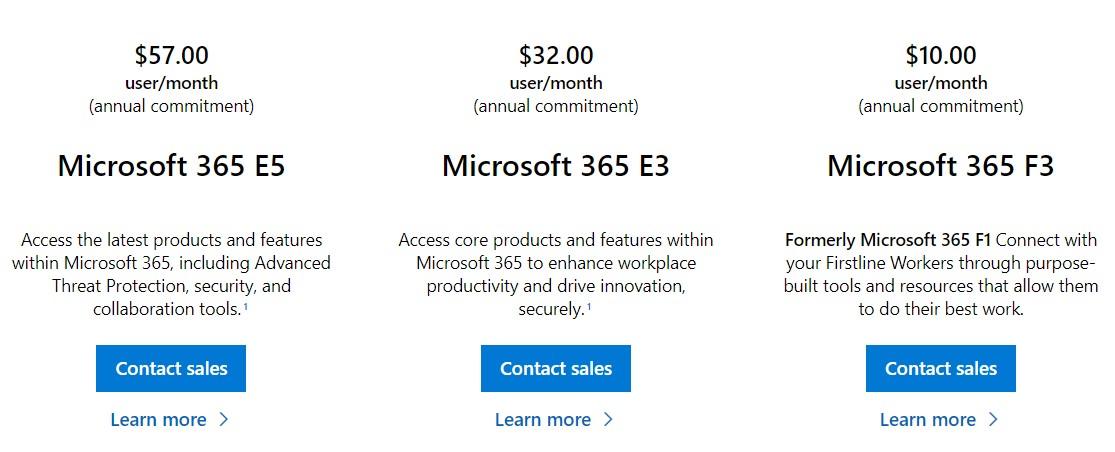Microsoft 365 provides the productivity tools required by enterprises. This guide covers key details about Microsoft 365, including available Office applications, system requirements, and pricing.

Skype for Business
Image: Microsoft
For just about any enterprise of any size, the productivity of its workforce revolves around the basic office suite of email, calendar, word processor, and spreadsheet. But as the enterprise workforce has become more mobile, the basic productivity toolset has had to adapt and change to match new requirements. This is why Microsoft updated Office 365 to be a mobile collaborative platform ready to get work done wherever and whenever it happens.
As of April 21, 2020, Microsoft has officially changed the name of its productivity suite from Office 365 to Microsoft 365. From that date forward, billing, marketing, and alerts will reflect the Microsoft 365 branding. The new naming convention will not affect the current subscription pricing levels for current customers, nor will it change the level of current service. Applications included in the various versions of the productivity suite will also remain the same.
SEE: Microsoft 365: A cheat sheet (free PDF) (TechRepublic)
Microsoft 365 is the de facto productivity suite for many enterprises, and it is the suite all the other competitors are measured against. So as an IT leader, it’s in your best interest to know everything about Microsoft 365. To help you achieve that goal, TechRepublic compiled the most important details and related resources on Microsoft 365 into this guide, which we’ll periodically update as new information becomes available.
Executive summary
-
What is Microsoft 365? Microsoft 365 provides users with the basic productivity applications necessary to get work done in the modern enterprise. It includes applications like Word, Excel, Outlook, PowerPoint, OneNote, and OneDrive, just to name a few.
-
Why does Microsoft 365 matter? As the standard for productivity suites, competing products are generally measured against applications from the Office 365 suite.
-
Who does Microsoft 365 affect? In the modern mobile-centric enterprise, Microsoft 365 provides the tools used to get work done. This makes Microsoft 365 important to just about every working individual.
-
When is Microsoft 365 available? The latest version of Microsoft 365 is available right now. The current subscription includes Office 2019 applications.
- How do you get Microsoft 365? Enterprises can purchase a subscription to Microsoft 365 via the Microsoft website. Subscriptions range from $8/user/month to $35/user/month.
SEE: Check out all of TechRepublic’s cheat sheets and smart person’s guides
What is Microsoft 365?
Microsoft 365 is a subscription service that provides users with the basic productivity applications necessary to get work done in the modern enterprise. Productivity applications include, but are not limited to, a word processor, a spreadsheet, an email client, a calendar, and a presentation application. In fact, because of Microsoft 365’s cloud-based structure, the suite of productivity applications is constantly being updated and improved.

Image: Microsoft
As an example, a Business Premium subscription to Microsoft 365 ($12.50 per person per month) includes these applications:
-
Word: This app sets the standard for word processors and is available with Microsoft 365 for both Business and Premium. If users in your enterprise need to create documents, this is the tool they will use.
-
Excel: The spreadsheet has been the workhorse for basic data analysis since its invention back in the previous century. Excel is the current standard-bearer and comes with Microsoft 365 for Business and Premium.
-
Outlook: Microsoft 365’s solution for managing email and an appointment calendar is called Outlook. The app has been around for many years and its busy interface tends to be either loved or hated by users. It’s available with both the Business and Premium subscriptions.
-
PowerPoint: Communicating information to a group of individuals at a meeting often involves a presentation. Microsoft 365’s PowerPoint allows users to create, display, and disseminate information in formats ranging from the basic slide to animation to video.
-
Publisher: Sometimes communicating information to a broader audience requires something more permanent and more formal than a presentation at a meeting. The Publisher app in Microsoft 365 provides users with the tools they need to publish professional-looking newsletters, brochures, and booklets.
-
OneNote: As the workforce has become more mobile, the need to capture information on the go has become increasingly important. Applications like OneNote allow users to take notes on any device and then retrieve those notes from any other device. It’s your basic productivity cloud app.
-
OneDrive: The other basic and fundamental cloud-based application is storage. With each Microsoft 365 Business subscription, Microsoft provides users with up to 1 TB of cloud storage in the form of an application called OneDrive for Business.
-
SharePoint: A subscription to Microsoft 365 Business Premium also provides an enterprise with a few applications for backend infrastructure management. SharePoint, for example, can be used to host intranet websites for the enterprise. It also can be used to host smaller sites designed for smaller teams or divisions. The permissions for these sites can be designated by the users themselves or by appointed administrators.
-
Exchange: Each Microsoft 365 for Business subscription includes an Exchange Server, which handles all the email management duties. By default, each user is granted 50 GB of storage for email. Maintenance of the Exchange Server is generally handled at the administrator level.
-
Microsoft Teams: Younger members of the modern enterprise workforce are very familiar and comfortable with chat applications. To satisfy the needs of those employees, Microsoft 365 now includes Microsoft Teams, a chat-based workspace that integrates people, content, and tools into a single platform.
-
License scope: One licensed subscription to Microsoft 365 covers five phones, five tablets, and five PCs or Macs per user.
-
Support: Each Microsoft 365 subscription includes full 24/7 web and phone support.
-
Collaboration tools: Along with the typical productivity applications, Microsoft 365 includes many collaboration tools like Delve, Yammer, and Sway. These tools allow users to communicate, brainstorm ideas, share documents, and have video meetings while on the go.
-
Power BI: One of the most powerful tools any enterprise can have, regardless of size, is reliable business intelligence (BI) gathering applications. Microsoft 365 for Business, through its Power BI application, provides enterprises with a set of tools for collecting, sorting, and presenting business intelligence data.
-
Infrastructure: All Microsoft 365 subscriptions include a reliability guarantee of 99.9% uptime. In addition, permissions for internal access control are handled by administrators designated by the enterprise using tools supplied by Active Directory. Each Microsoft 365 subscription includes five layers of security and proactive monitoring to help safeguard your data.
-
Kaizala: Mobile communications is vital to many organizations, and Kaizala adds a secure mobile messaging and workflow app that can be deployed both internally and externally. Employees, customers, and vendors can all communicate and coordinate with each other in a secure environment.
-
Flow: Managing workflow in a dynamic business and across various applications can consume precious time and resources. Flow provides a simple system to manage notifications within Microsoft 365 across all of the applications you use.
-
To-Do: An update to Microsoft 365 has added the To-Do app to the productivity suite. No longer an afterthought piggybacking on the Calendar app, To-Do is now a feature-rich standalone application that integrates with the rest of Microsoft 365.
-
PowerApps: For those situations when your organization needs a specific app to do a specific job, there is PowerApps. Using simplified development techniques, businesses can create sophisticated applications using features, procedures, and processes found in Microsoft 365.
SEE: How to build a successful career as a cloud engineer (free PDF) (TechRepublic)
System requirements for Microsoft 365
-
CPU: 1GHz or faster
-
Memory: 2 GB RAM
-
Hard drive: 3 GB of available space (6 GB for Mac)
-
Display: 1280 X 800 screen resolution
-
Operating system: PC-Windows 7, 8, or 10. Mac-Mac OS X 10.10
-
Connectivity: Internet connection
Additional resources
Why does Microsoft 365 matter?
Collaboration and communication are the key components of productivity in the modern enterprise, and productivity is the lifeblood of the enterprise. Microsoft 365 provides the tools necessary to bring collaboration and communication–and by extension, productivity–to each individual in an enterprise.
For many companies, Microsoft 365 is the de facto standard for productivity software. The performance of all competing products is generally measured against applications from the Office 365 suite.
Additional resources
How does Microsoft 365 compare to G Suite?
The primary competition for Microsoft 365 comes from Google’s G Suite, which is a set of productivity and collaboration apps, formerly referred to as Google Apps. The G Suite features the typical set of productivity applications (word processor, spreadsheet, email, calendar), as well as several tools designed to enable and enhance collaboration in a modern mobile workforce. Pricing for G Suite starts with a subscription of $5 per user per month.
Other web-based and online productivity suites from other vendors are available–some are even offered without a monthly subscription, but those suites often lack a full set of collaboration tools and are not suitable for business enterprises.
Additional resources
Who should use Microsoft 365?
Just about every knowledge worker in every enterprise is required to have an email account and a calendar application. Beyond that, most individuals in an enterprise will need to use, at least once in a while, a word processor. And a significant number of individuals in an enterprise will also find themselves needing to use presentation software or a spreadsheet at some point in their career.
These are the productivity tools of any enterprise. These are the tools used to get work done. That means Microsoft 365 is important to just about every working individual.
Additional resources
When is Microsoft 365 available?
Microsoft 365 is available right now. The current subscription includes applications updated to the Office 2019 version. The key to the subscription model is that each user will always be using the most current and most secure version of each application because each application is continuously updated.
As of October 13, 2020, Microsoft will no longer support Office 2010 for the PC and Office 2016 for the Mac. Microsoft will no longer provide technical support, bug fixes, or security updates for those products. Continuing to use those applications after the support date could result in reliability and security issues.
Additional resources
How do I get Microsoft 365?
Enterprises with fewer than 300 users can purchase a subscription to Microsoft 365 and download the appropriate applications via the Microsoft website. The Standard version costs $12.50 per user per month ($150/year), while Microsoft 365 Premium costs $20 per user per month. There are also versions of Office 365 available for individuals ($69.99/year) and households ($99.99/year).
In August 2021, Microsoft announced that it would raise the subscription cost for all Microsoft 365 versions starting on March 1, 2022. The subscription prices will increase as follows:
- Microsoft 365 Business Basic will rise from $5 to $6 per user.
- Microsoft 365 Business Premium will rise from $20 to $22.
- Office 365 E1 will rise from $8 to $10.
- Office 365 E3 will rise from $20 to $23.
- Office 365 E5 will rise from $35 to $38.
- Microsoft 365 E3 will rise from $32 to $36.
” data-credit=”Image: Microsoft”>
Business pricing of Microsoft 365
Image: Microsoft
For large enterprises, unlimited user versions of Office 365 are available, ranging from $12 per person per month to $35 per person per month. Each subscription caters to a particular type of enterprise. More expensive enterprise versions of Office 365 add features like voicemail, compliance auditing, rights management, encryption, and Advanced Threat Protection.
” data-credit=”Image: Microsoft”>
Enterprise pricing of Microsoft 365
Image: Microsoft
Additional resources
How do I use Microsoft 365?
Here are Microsoft 365 tips and tricks published on TechRepublic.



